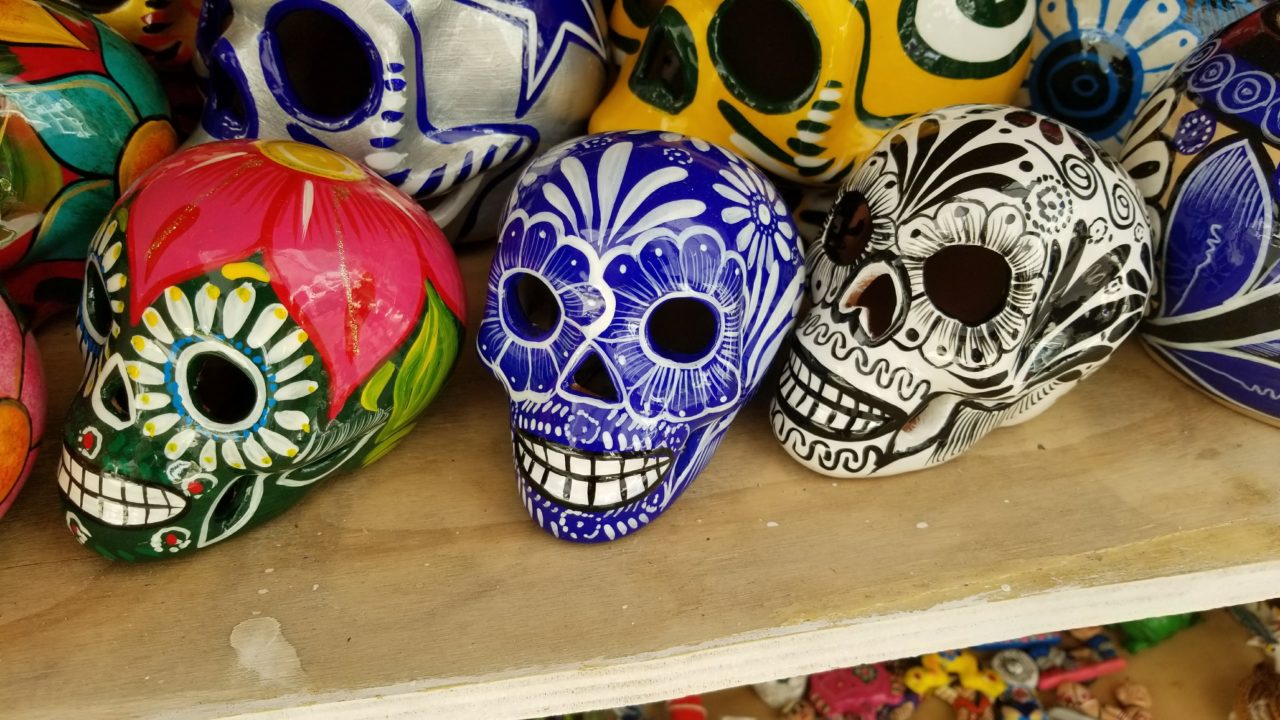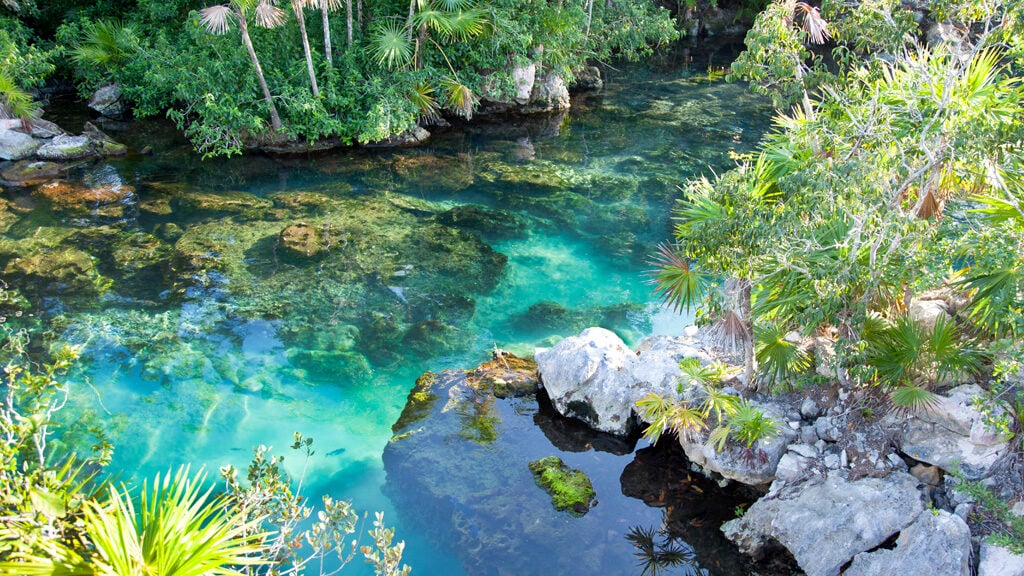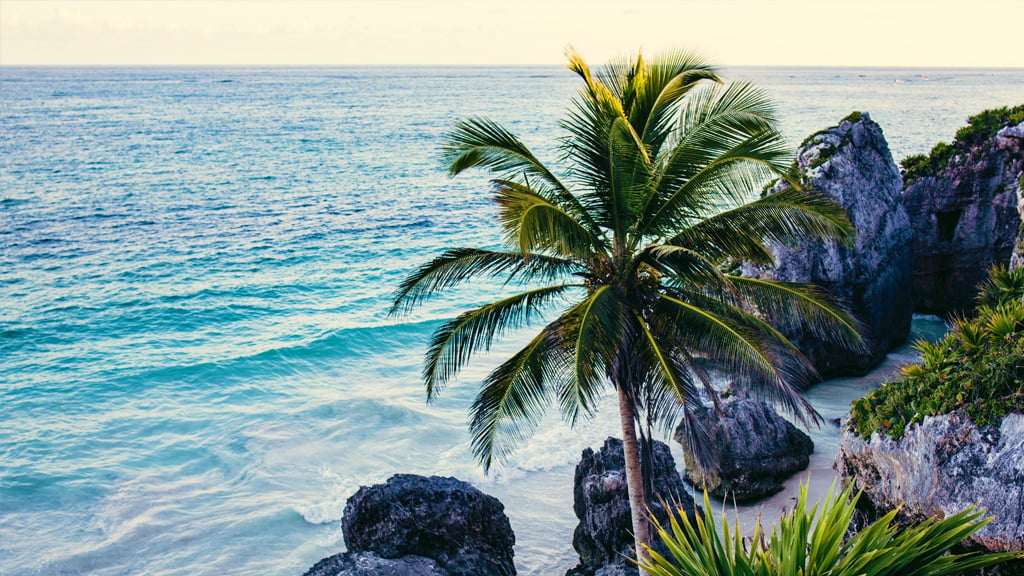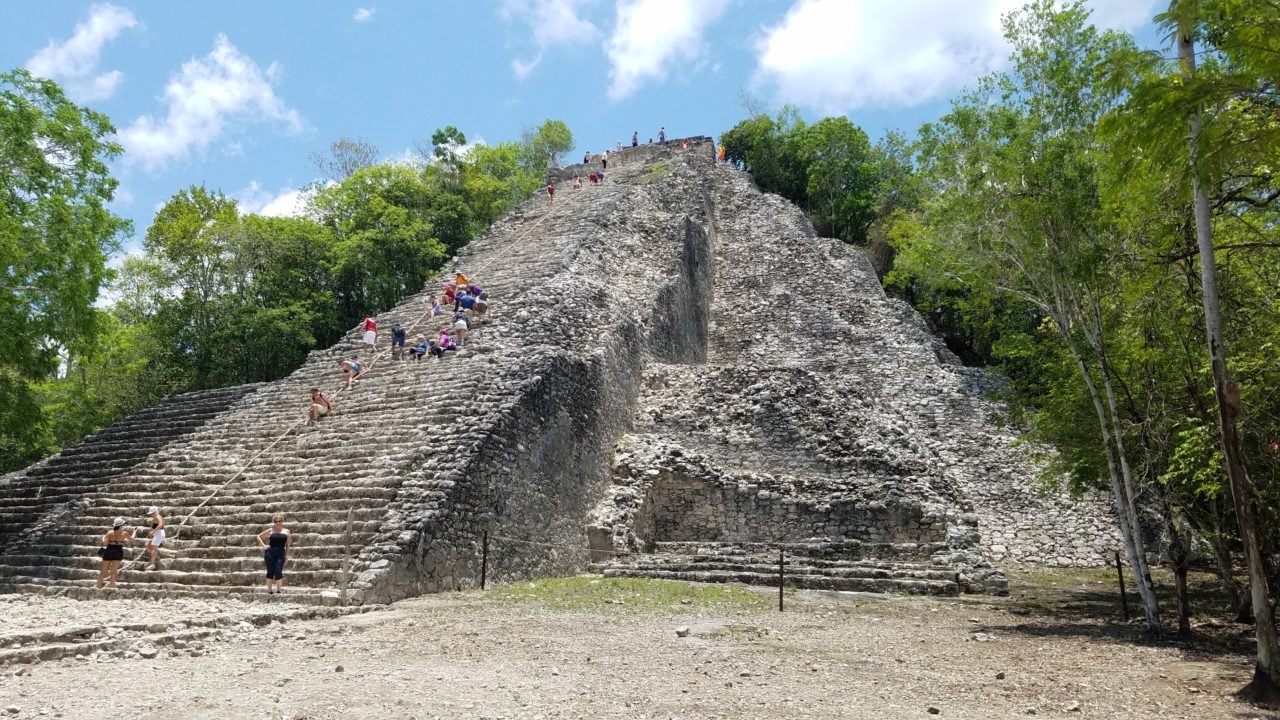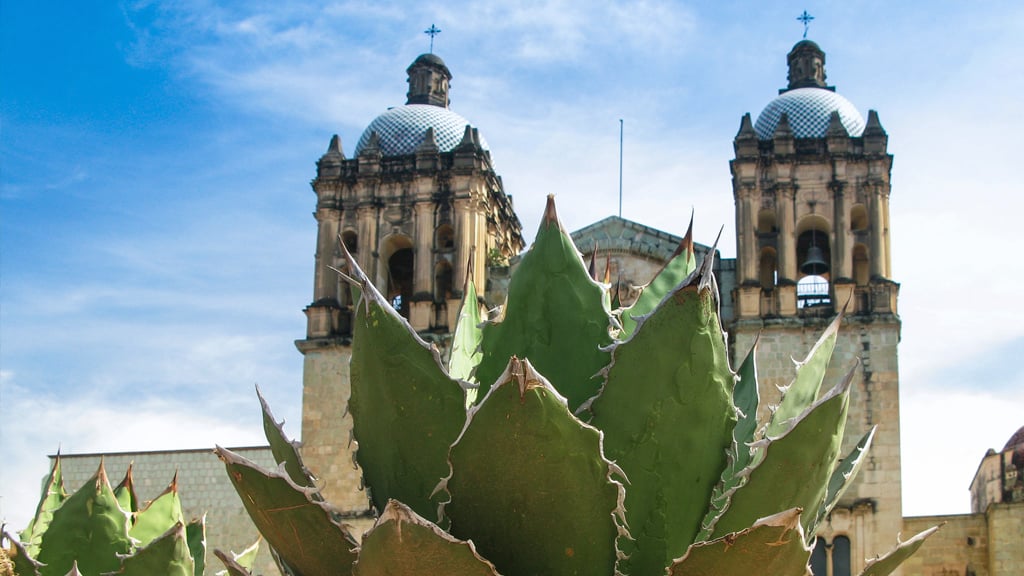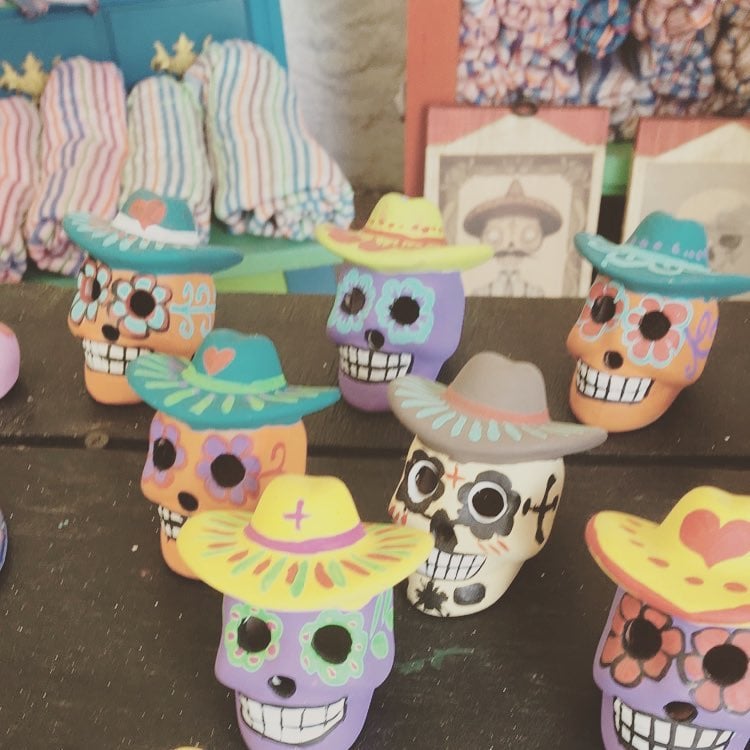Day of the Dead is a super fun, big holiday that's blown out over three days all over Mexico. While there are many places where you can join in on the festivities, we thought we'd tell you about three destinations that each have their own unique haunting charm from October 31-November 2.
XCaret Park: Festival of Life and Death Traditions
If you want to really go all out for Day of the Dead in a confined central location, then XCaret Park in Playa del Carmen is where you'll want to land. During the year, it's a theme park, so know that going in there are underground rivers, a beach, an inlet and natural pools along with a coral reef aquarium, butterfly pavilion and of course, Wi-Fi. So on top of all this beach vacay goodness, during their Festival of Life and Death Traditions they've got expositions, altars (ofrendas), dances, concerts, tours and a mass, all dedicated to celebrating Day of the Dead aka Dia de Muertos.
It's easy to get to XCaret. Just fly into Cancun, then head down to Playa del Carmen in the Riviera Maya, which is roughly an hour to an hour and a half away. There are loads of amazing resorts near, where you can stay. You'll see them one after the other on highway 37, the main road that snakes down the gorgeous Yucatan Peninsula.
Pac Chen Village Near Coba Mayan Ruins
If you're up for an adventure, this just might be your destination. Located near the Coba Maya Ruins, Pac Chen is a little village in the thick of the jungle that sits on a lagoon. You'll start in Playa del Carmen and head south down highway 37 until you reach Tulum. You'll then turn right and head east inland towards Coba. When you drive up to Coba, ask the attendant to direct you to Pac Chen, as it's literally right there on the lagoon.
When you arrive, you'll see thatched roofed huts and lush palms. Here, they celebrate Hanal Pixan, or Dinner of the Souls, a massive feast to honor the dead. You might see village women making empanadas and a few other people hovered around an underground oven cooking Cochinita Pibil (baked marinated pork). Before the pork is pulled from the earth, a a shaman will come forth and chant a blessing in an ancient Mayan dialect, and light some incense. When the pork is unearthed, it's put on an altar, where the shaman will bless it again. Then it's time to dig in.
If you want to also go to Coba, it's a fascinating place to explore. You can get group or private tours of the ruins, then rent a bike and ride it under a tree canopy until you reach the ruins. The climb is a challenge; be prepared to go up on all fours and butt-scoot your way down. There is a rope that runs up the middle of it so you can hang on when you're going up and down. Luckily, there's a little hut where you can get cold drinks and snacks. But the view from the top of the ruin is epic: all the way around you'll see a bright green jungle.
Oaxaca: Big, Big Par-tay
Oaxaca is a town located in southern Mexico and is probably THE epicenter for Day of the Dead in Mexico. They've got everything going on: altar aka ofrenda competitions, Day of the Dead Markets, sand tapestries with the face of Frieda Kahlo (and her famous moustache), big parades, festive carnivals, parties in cemeteries, delicious food and drink - the list go on. Here is a bit more detail about all this.
The Altars. These shrines to the dearly departed are works of art and sights to behold. Schools and social organizations hold contests that are impressive. If you see a trail of flowers, paths of campasuchil petals leading to the altars, be careful not to smash them with your shoes: these fragrant petals help deceased loved ones make their way to the altar.
Day of the Dead Markets. These bustling places are where you can get everything you ever needed to put at an altar to greet and honor a deceased loved one: sugar skulls, kids' toys, candles, food, flowers and more. Though there are markets all over the city, the Central de Abastos market south of the city center is the biggest one and is where you can shop 'til you drop. If you want to venture outside the city, the Friday market in Ocotlan is the place to hit.
Day of the Dead Bread. Pan de Muerto, loosely translated it's "bread of the dead," and you'll get a taste of it during this celebration. During the year, it's called pan de yema, or "yolk bread," but in this iteration it has a little head on it like a person. Kinda funky, but super delicious when it's dipped in Oaxacan hot cocoa or chocolate.
Day of the Dead Sand Tapestries. Also known as tapetes de arenain, sand tapestries are common sights during Day of the Dead. When a person dies, a sand tapestry is created in their honor. It usually is a picture of a saint, who the person who has died was devoted to. After nine days, all the sand is swept away and the sand is taken to the cemetery and poured into the grave during a special ceremony.
Day of the Dead Installation at the Palacio de Gobierno. Every year there is an altar and giant sand tapestry set up in Oaxaca's Palacio de Gobierno (now the Museo del Palacio). There is also usually a contest for the best altar - with altars set up around the main floor of the building. A visit here is a must during Day of the Dead in Oaxaca.
Day of the Dead Comparsas aka Carnival-like Procession. During these fetes, there's music and dancing, lots of colorful costumes, people dressed up like Catrinas and more. You can find them in a variety of barrios (neighborhoods) in the city and nearby villages.
Truth is, no matter where you go in Mexico during Day of the Dead, it will be a party. Be sure to join in!
